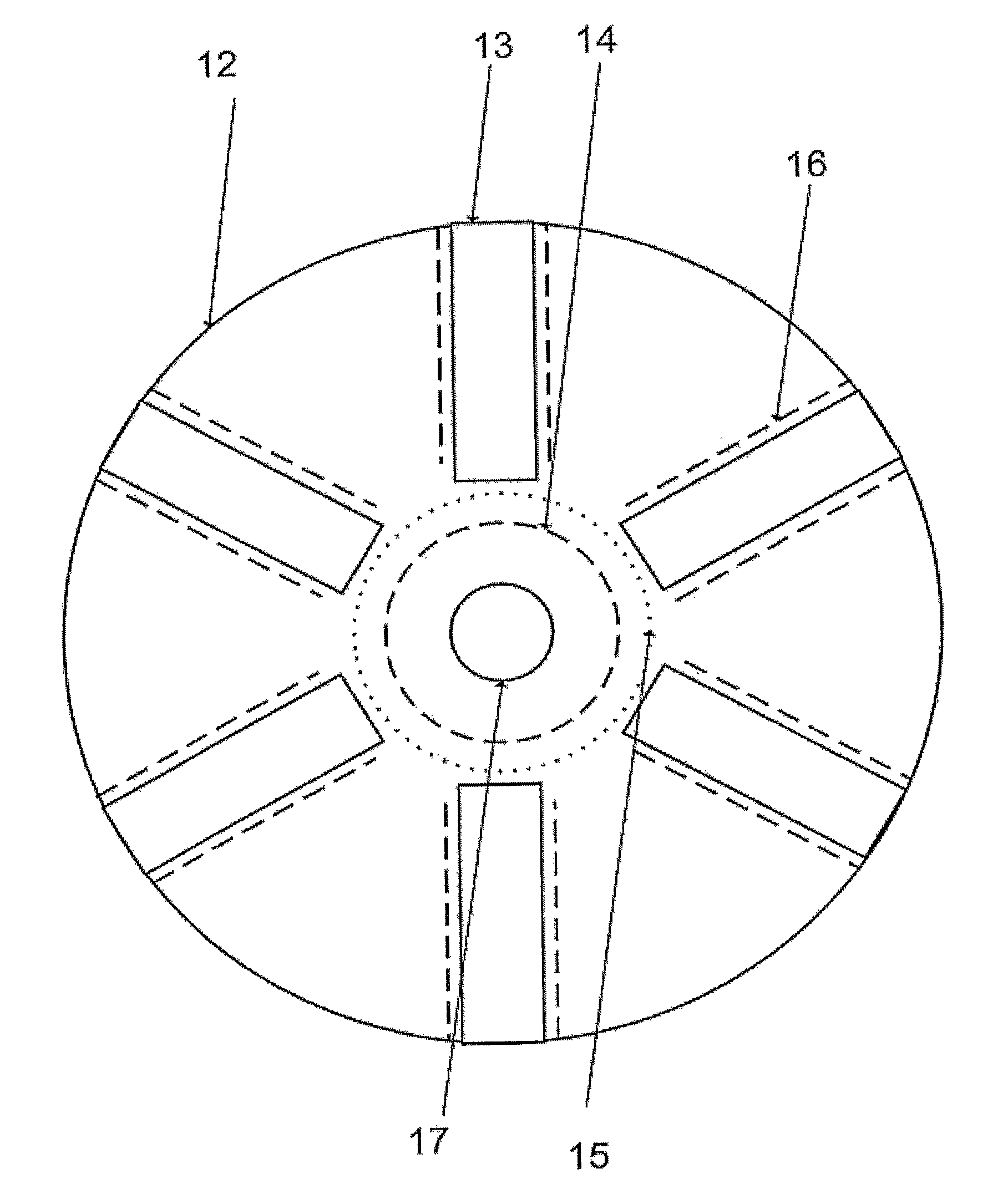Well flaw detection system (embodiments)
a technology of well flaws and embodges, which is applied in the field of well flaw detection systems, can solve the problems of increasing the water cut in the produced fluid, increasing the service life of low-time-consuming well repairs, and not being suitable for non-conductive materials, etc., and achieves high detection efficiency and high temperature
- Summary
- Abstract
- Description
- Claims
- Application Information
AI Technical Summary
Benefits of technology
Problems solved by technology
Method used
Image
Examples
embodiment 1
[0022]The set of scintillation detectors (to 12 as in known inventions, e.g. SGDT-100) is replaced for two gas filled detectors (operating in ionization or proportional mode). The two independent gas filled detector's are at a certain distance from the radiation source to allow simultaneous casing string condition and cement quality control. Possible design of the device is shown in FIG. 1. Gamma rays 25 are emitted from the gamma source 1 scattered in the casing string 2 or cement 4, pass through the window 6 of the collimator 5 and are incident upon the detectors 7 and 8 which are coaxial with the gamma source 1. The detectors 7 and 8 are separated by the collimator 11. If the background gamma radiation scattered outside the casing string is low enough (this can be achieved by correctly choosing the collimator shape), the total count rate of the detector 7 gives information on the casing string thickness. The smaller the effective thickness of the string (if the string has a cavit...
embodiment 2
[0023]The number of the detectors can be increased if the task is to obtain further information, e.g. providing the nondestructive control of wells with multiple casing strings. The device operation principle is the same as described above. The design of the device is shown in FIG. 2. The device comprises a gamma source 1, three detectors 7-9, the window 6 of a collimator 5, the collimator 11 for the detectors, two casing strings 2 and 3 and bonding cement 4. In this embodiment the detectors 7 and 8 detect gamma radiation scattered in the casing strings 2 and 3, respectively, and the detector 9 detects gamma radiation scattered in the bonding cement 4. The device performance is limited primarily by gamma radiation attenuation in the casing strings and in the bonding cement, therefore to control cement quality one should either increase the exposure or replace the gamma source (by either increasing the radiation intensity or using gamma source with higher gamma rays energy, e.g. repl...
embodiment 3
[0028]Ionization operation mode is suggested as a preferred embodiment of a gamma ray flaw detector with high pressure gas filled detectors. Operation in this mode requires high density (pressure) media with low near-electrode electric field strength not generating avalanche.
[0029]The high pressure (30-60 bars) Xe filled ionization chamber can be used for flaw detection in the casing string or the bonding cement. High detection efficiency requires high gas pressure which is nearly proportional to gas density. The efficiency of an ionization chamber can be increased by using a Frisch grid; alternatively, only the electron component of the total signal can be used. Possible ionization chamber design is shown in FIG. 3 (plan view). It comprises a light metal cathode 12. For low energy gamma radiation, aluminum or beryllium alloys can be used, whereas for higher energy gamma rays (E>100 keV), stainless steel or a combination of a metal and a nonconductive material with a low attenuation...
PUM
 Login to View More
Login to View More Abstract
Description
Claims
Application Information
 Login to View More
Login to View More - R&D
- Intellectual Property
- Life Sciences
- Materials
- Tech Scout
- Unparalleled Data Quality
- Higher Quality Content
- 60% Fewer Hallucinations
Browse by: Latest US Patents, China's latest patents, Technical Efficacy Thesaurus, Application Domain, Technology Topic, Popular Technical Reports.
© 2025 PatSnap. All rights reserved.Legal|Privacy policy|Modern Slavery Act Transparency Statement|Sitemap|About US| Contact US: help@patsnap.com



